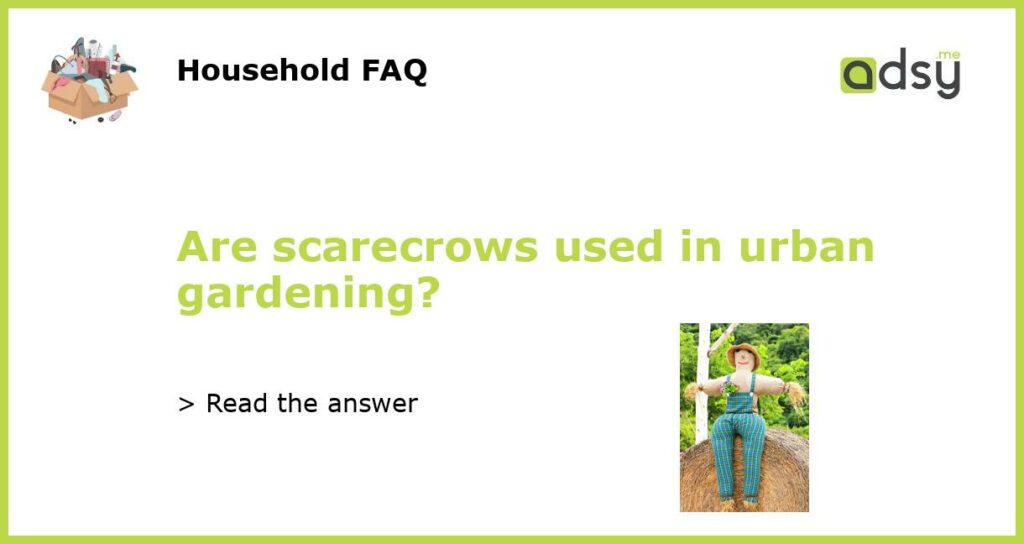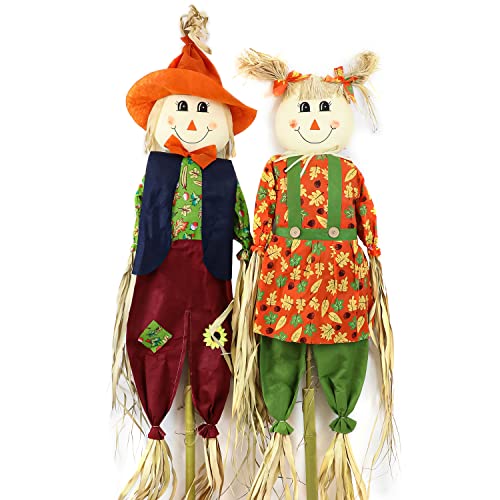Scarecrows in Urban Gardening: A Modern Twist to a Traditional Technique
Scarecrows have long been associated with rural agriculture, standing tall in fields to protect crops from pesky birds and other animals. However, with the rise in popularity of urban gardening, a question arises: are scarecrows used in urban gardening? Let’s explore how this traditional technique is being adapted for urban spaces and the benefits it brings.
The Function of Scarecrows in Urban Gardening
In urban gardening, scarecrows serve a similar purpose as in rural agriculture – to deter animals and birds from feasting on crops. Urban areas can be plagued by pests such as pigeons, squirrels, and rabbits, and scarecrows can act as a physical deterrent by creating the illusion of a human presence.
Moreover, scarecrows also serve an aesthetic purpose in urban gardens. They add a touch of whimsy and personality to the space, making it more visually appealing for gardeners and visitors alike. These human-like figures can be dressed in colorful clothing and accessorized with recycled materials, adding an artistic and eco-friendly dimension to urban gardening.
Adapting Scarecrows for Urban Spaces
Scarecrows traditionally stood in open fields, but in urban settings, space is often limited. Therefore, urban gardeners have had to come up with creative ways to incorporate scarecrows into their gardens.
One popular approach is to create smaller, more compact scarecrows that can be placed strategically throughout the garden. These scarecrows can be mounted on poles or attached to planters, allowing them to be easily moved if needed.
Another adaptation is the use of scarecrow replicas made from alternative materials. These can include scarecrow statues made from recycled plastic or metal, or even inflatable scarecrows that can be deflated and stored when not in use. These materials are sturdy, weather-resistant, and often more sustainable options for urban gardeners.
The Benefits of Scarecrows in Urban Gardening
The use of scarecrows in urban gardening offers several benefits. Firstly, scarecrows help protect crops from being damaged or eaten by animals. This is especially important for urban gardeners who rely on their produce for personal consumption or to supplement their grocery shopping.
Furthermore, scarecrows can also deter pests from entering the garden in the first place. The presence of a scarecrow can ward off animals and birds, preventing them from becoming a nuisance and potentially destroying the entire garden.
Enhancing Community Engagement and Education
Scarecrows in urban gardening can also serve as powerful tools for community engagement and education. They act as conversation starters and draw attention to the importance of local food production and sustainability.
Community gardens and urban farming initiatives often organize scarecrow competitions or events, where participants can create their own scarecrows and showcase them in the garden. These initiatives not only foster a sense of community but also raise awareness about urban gardening and its benefits.
Moreover, scarecrows can be used as educational tools for children. By involving them in the design and construction of scarecrows, children learn about gardening, nature, and the role of scarecrows in protecting plants. This hands-on experience helps instill a love for gardening and an understanding of sustainable practices from a young age.
In conclusion, scarecrows are indeed used in urban gardening, albeit in adapted forms. They serve the same purpose of deterring animals and birds from damaging crops, while also adding an aesthetic appeal to urban gardens. The benefits of scarecrows in urban gardening extend beyond crop protection, with community engagement and education being significant factors. So, whether you’re a seasoned gardener or a beginner, consider incorporating a scarecrow into your urban garden to reap its rewards.






